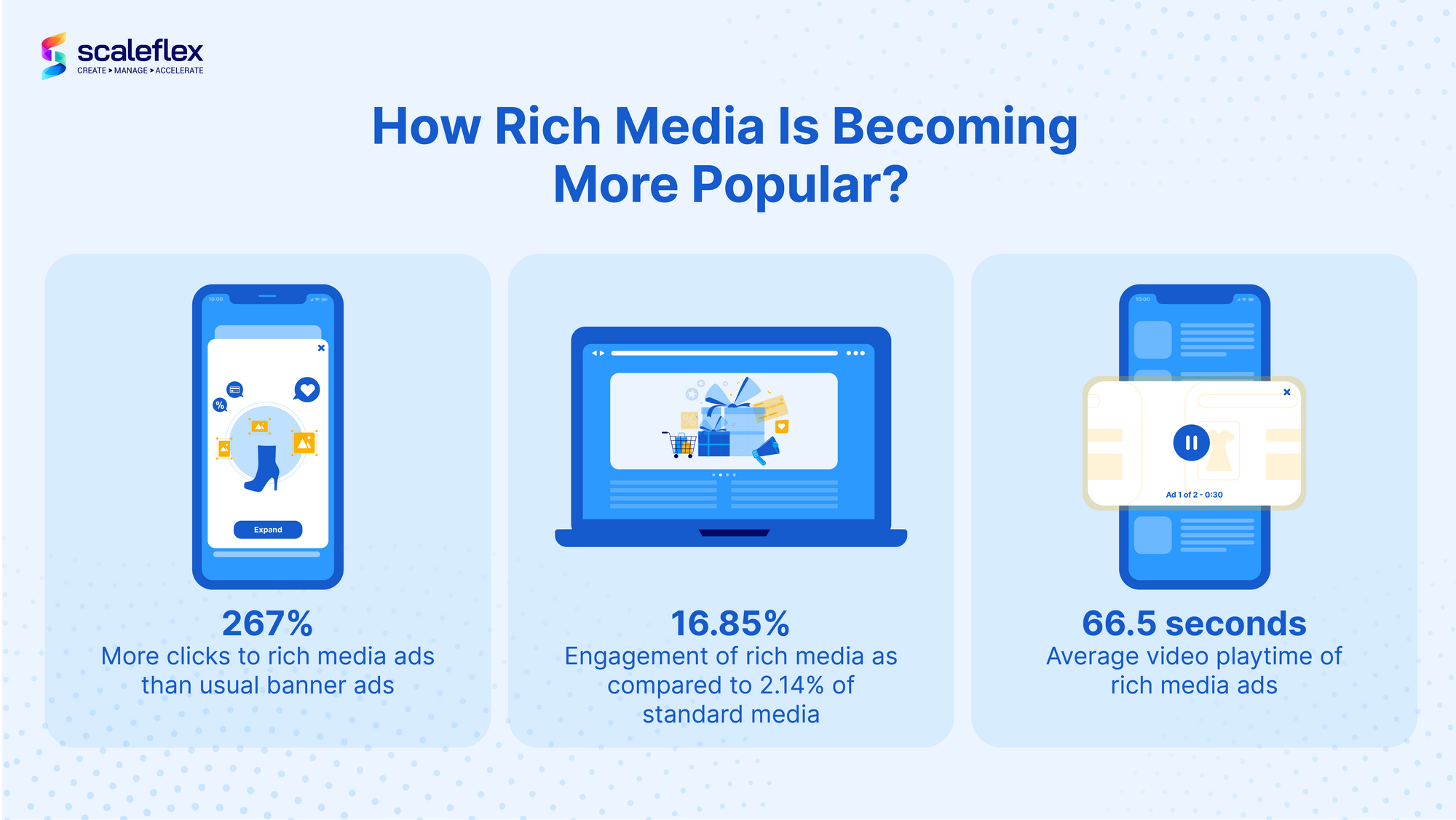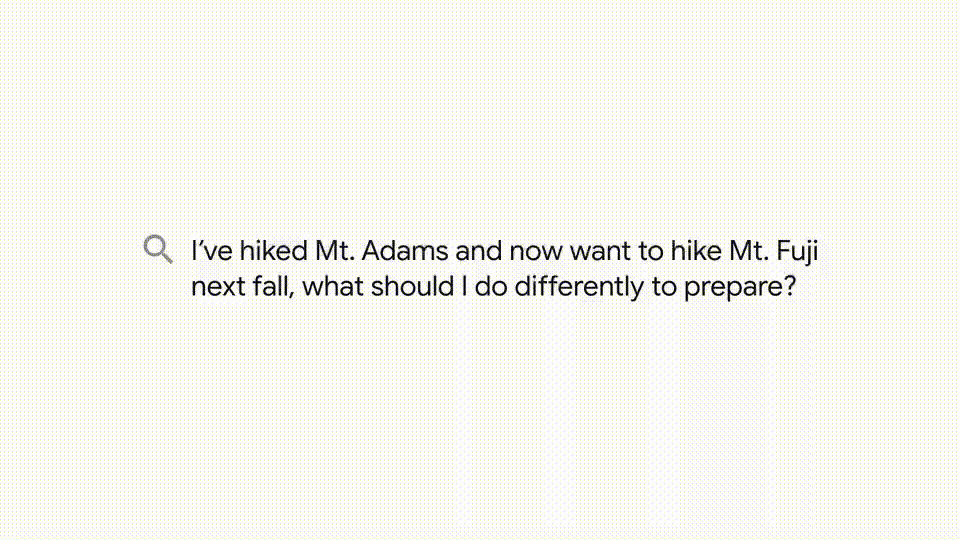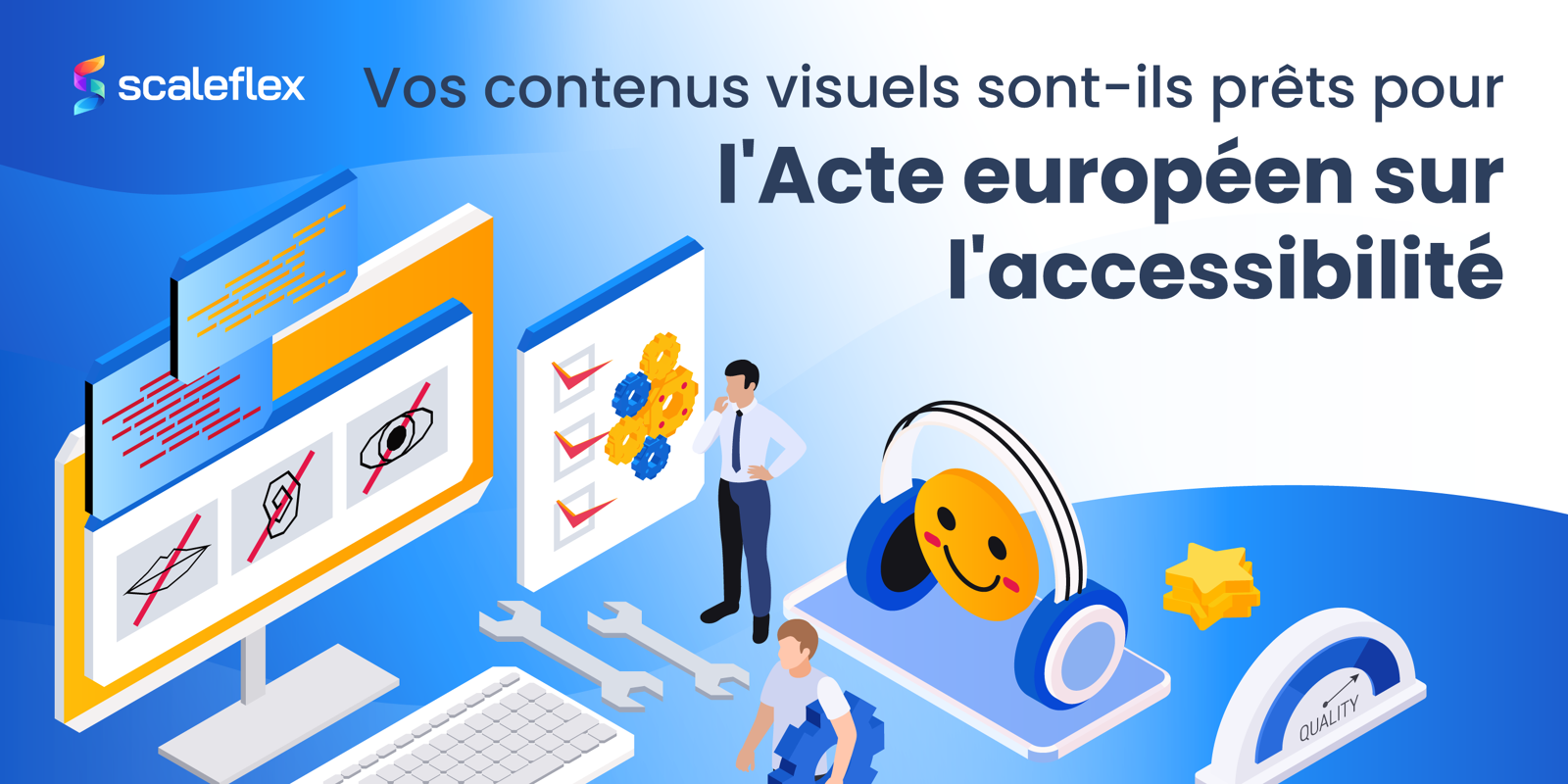Rich Media and SEO: Content Trends and Best Practices
Have you noticed a gradual drop in traffic from organic search?
SEO, the most efficient and sought-after source of traffic and conversions, has grown increasingly complex. Google’s search results are getting richer and more interactive, and for brands to stand out from the crowd and be on the top of the search results, optimizing rich media is one of the solutions.
Semji is a SaaS platform that helps brands improve the visibility of their content on Google using artificial intelligence. In this blog post, Scaleflex talks to Semji’s Co-Founder, Nicolas Nguyen to explore the latest Google Search trends and how rich media is the next frontier.
Why are images important for SEO and content visibility today?
Images play a key role in the visibility of content today. They are vectors of direct organic traffic on your pages, and have a very positive role in their positioning in search engines.
Higher click-through rates
In 2021, we’ve already observed that 55% of requests had an image carousel result. 50% of the time, these carousels end up in the top 3 search results with a much higher click-through rate than traditional results.
Improved user retention
On the UX side, embellishing textual content with multimedia content makes it more digestible in the eyes of Internet users! By improving the user experience, you improve the retention of the reader on your site and, consequently, lower your bounce rate.
Leverage Google image search
Another important element: e-commerce sites that use images capture 5 to 10% of SEO traffic through Google Images. This is all the more interesting for the field of e-commerce image optimization as depending on the search intent, Internet users search differently.
For instance, when it comes to transactional queries and products (such as fashion, home furnishings, decoration) where the design has a particular importance, the users are more inclined to search through Google Images.
So don't neglect image optimization if you want to maximize your sales through organic traffic!
What are the impacts of the Core Web Vitals update on your content, and how to deal with it?
Today, Google favors pages that have passed the Core Web Vitals (CWV) test, to the detriment of pages of equivalent content quality that do not meet the CWV criteria. On average, the pages not respecting at least one CWV criterion lost 1.15 positions.
Since June 2021, Google has implemented the page experience update. This new algorithm ranking aims to highlight sites with a good speed of loading and an optimized user experience, based on these three indicators:
LCP (Largest Contentful Paint)
This is how long your main content will take to load. It marks the exact moment where the heaviest element of your content is fully displayed. If your page takes less than 2.5 seconds to load, good news: you tick a criterion appreciated by the algorithm.
FID (First Input Delay)
The FID measures the responsiveness of your web page. In a few words, it calculates the delay between the first user interaction and browser response. For Google to consider that you provide a good user experience, your site should score below 100 milliseconds.
CLS (Cumulative Layout Shift)
It has all happened to us to be disturbed in the navigation of a page by the addition of a new element, shifting content, etc. This is the reason why Google has put in place the CLS. This indicator measures the visual stability of your page: to what extent the contents of your page move as your page loads?
What is the future of rich media in SEO?
Insofar as Google tends more and more to take into account the user experience to position content on search results, rich media formats play an important role in the positioning of pages.

Rich media refers to interactive media content (autoplay videos, expandable ad banners, pop-ups, pop-unders, sliders, etc.) to grab the user’s attention. Beyond improving your visibility, these interactive formats:
- present your message more profoundly,
- promote products and services in a more visually appealing way,
- reduce your bounce rate,
- increase your click-through rate, and
- increase the time users spend on your website
But we must remain vigilant: misused rich media formats can have a negative impact on your site (in particular the CLS criterion). Since interactive content will continue to grow and multiply, optimizing your images for SEO is so important.
To ensure the visibility of content, what would be the best image SEO practices?
Google always seeks to better satisfy its users. Pages that provide better web performance (and therefore, offer a better customer experience) are favored among the top results. Obviously, there are many good practices to adopt. Here, read on for 7 essential tips to optimize the referencing of your website thanks to images, including some that will allow you to respond to the Core Web Vitals update.
1. Adopt lazy loading
Lazy loading corresponds to the delayed loading of your images: they are loaded as they are as the user navigates the page. Since the data of your page does not load simultaneously, you’ll significantly reduce your page load time.
2. Deliver images in optimized formats
Over the years, new generation formats have appeared. One of the best known is developed by Google: the WebP! Images in webp format are on average 50% lighter than the jpegs, for a quality negligible to the naked eye.
By favoring these new formats, you lighten your pages and give yourself more chances to position yourself! Many other formats exist and are supported depending on your browser, such as JPEG 2000 (Safari), JPEG XR (Edge, Internet Explorer) or AVIF, supported in Windows 10.
3. Think responsive!
Adapt the size of your images to each type of device - that’s what responsive images do. Indeed, loading an image too large compared to the destination screen wastes bandwidth!
4. Don't neglect alt-text markup
Alt markup allows you to describe your image in a short and concise way, which represents a great opportunity to target your keyword!
5. Don’t Forget Structured Data
Structured data allows you to provide more context and detailed information about your images to Google robots, which will positively influence your positioning. For example, you can add a caption, the creation date of the image, the name of the author, the type of image, etc…
6. Create an image sitemap
By creating a sitemap dedicated to the images of your website, you make it easier for Google bots to read your site. Thus, you give an even deeper semantic context to your pictures!
7. Consider search intent
The trick? Complete an image search on the keyword you are targeting. By observing the results displayed, you’ll better understand what Google expects. You can also use a solution like Semji to strengthen the universe semantics around your visual.
What are the upcoming trends in SEO?
Of course, SEO being a constantly evolving industry, there are many Google search trends to anticipate in order to better position themselves. I have selected 4 of them, which will allow you to get a head start!
1. Reverse image search via Google Lens
The place of images in terms of SEO continues to grow, and this is illustrated by the development of Lens by Google “Search what you see”. Lens now offers multiple search, which allows you to combine visual and textual search.
You can, for example, take a picture of a pair of shoes and add the request “maintenance” to benefit from instructions. Thus, the semantics coupled with images used on your page can bring you traffic.
2. Google Multitask Unified Model (MUM)
The Google MUM (Multitask Unified Model) algorithm, based on artificial intelligence, allows Google to better understand the synergies between different types of content and improve the interpretation of multimedia content.
Clearly, this algorithm is able to analyze video, image and audio content in addition to textual content.
To better understand this, Prabhakar Raghavan, Senior Vice President at Google, put this algorithm in situations. By simulating the query “I hiked Mount Adams and now want to hike Mount Fuji next fall, what should I do differently to prepare myself?”

The MUM algorithm understands that we are looking for the differences and similarities between two mountains, and that you wish to obtain information and advice to prepare physically and/or equip yourself for this hike, while taking into account the seasonal context.
3. Helpful Content Update
This is the update that has been making a lot of noise in the SEO sphere lately: the Helpful Content Update.
Google is strengthening its desire to highlight useful and qualitative content for users, and penalize spam and automated content. Content created only for the purpose of being well-referenced on the SERP will be exceeded by the content offering unique, authentic information, with the aim of helping or informing Internet users. We are now talking about people-first content (written by a human).
4. The user experience is increasingly at the center of the experience
Google will implement the Interaction to Next Paint (INP), a new indicator that will replace the FID criterion in the Core Web Vitals. The INP will measure the responsiveness of the longest user on your page.
You will therefore have to be extra vigilant about the responsiveness of your interactive content! This new indicator is part of Google's desire to always put the user experience at the heart of its classification criteria.
Key Takeaways
Intrigued by what you’ve read? Get up-to-date about the latest search trends and learn more about the importance of images and rich media for your content strategy with Scaleflex and Semji: watch our webinar made with Semji!
More about Semji
Semji was born from a desire to help companies gain profitability on their strategy of content. Its SaaS solution allows marketing and SEO teams to boost their performance (traffic, conversions, turnover, etc.) thanks to advanced recommendations based on SERP data and competing content.
The Semji platform helps save time on production and content optimization, in particular through the automated generation of briefs, editorials with a writing assistant, called AI writing. AI Writing notably allows the user to build in a few seconds (and depending on the targeted request), a plan adapted to the expectations and search intentions of the internet users.





